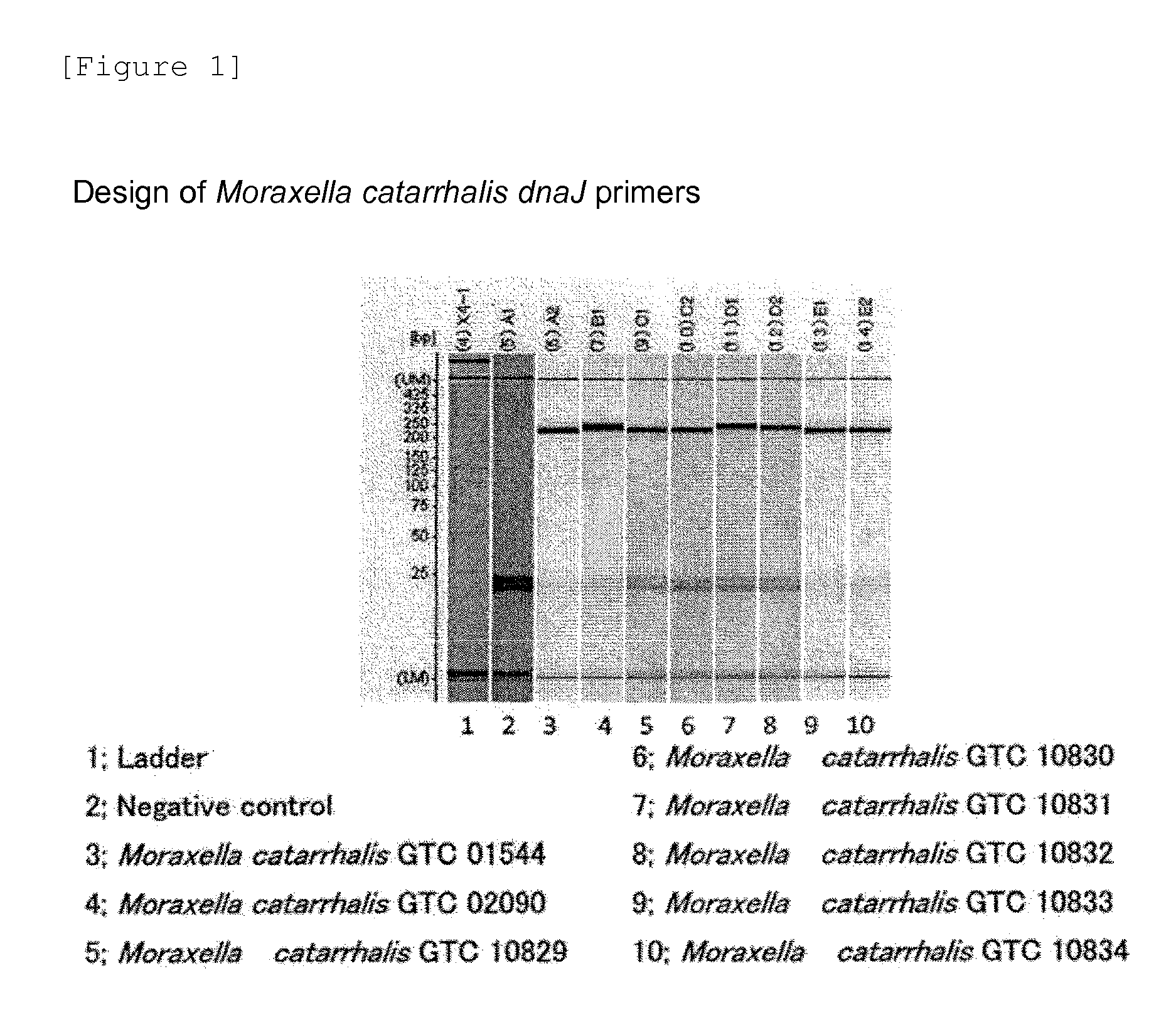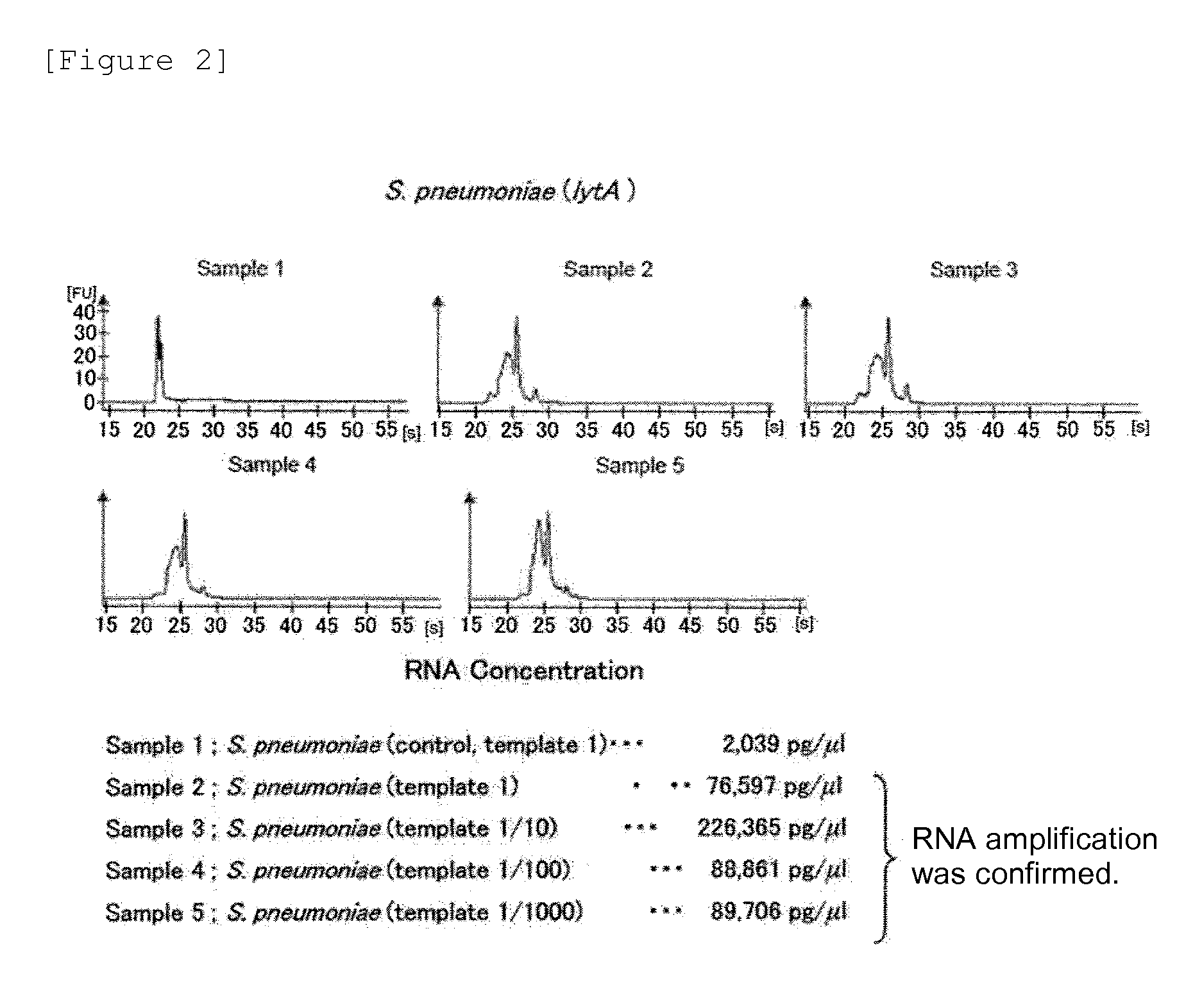Method for detecting pneumonia causative bacteria using nucleic acid chromatography
a technology of nucleic acid chromatography and pneumonia, which is applied in the field of methods and kits for detecting pneumonia causative bacteria, can solve the problems of insufficient contribution of testing methods to the selection of treatment, complicated underlying diseases, and affecting an extremely large number of individuals, and achieve the effect of accurate and rapid identification
- Summary
- Abstract
- Description
- Claims
- Application Information
AI Technical Summary
Benefits of technology
Problems solved by technology
Method used
Image
Examples
examples
Design of Moraxella catarrhalis dnaJ Primers
[0075]The genome information of Moraxella catarrhalis had not yet been completely decoded. Although primer design was pursued on the basis of the dnaJ gene sequence of a strain of related genus, primers specific for this bacterium were difficult to design. Meanwhile, only the genomic sequence information of this bacterium has been revealed in recent years. Thus, the annotation of the dnaJ gene based on this genomic sequence was carried out by ORF extraction using alignment software DNASISpro (manufactured by Hitachi Software Engineering Co., Ltd.). The design of novel primers was attempted from this sequence. The novel primers were verified using eight Moraxella catarrhalis strains. A reagent kit TaKaRa PCR Thermal Cycler GP was used according to the protocol described therein. PCR was carried out under conditions involving 95° C. for 3 min and (95° C. for 10 sec, 65° C. for 10 sec, and 72° C. for 10 sec)×40 cycles using EX Taq Hot start (...
PUM
 Login to View More
Login to View More Abstract
Description
Claims
Application Information
 Login to View More
Login to View More - R&D
- Intellectual Property
- Life Sciences
- Materials
- Tech Scout
- Unparalleled Data Quality
- Higher Quality Content
- 60% Fewer Hallucinations
Browse by: Latest US Patents, China's latest patents, Technical Efficacy Thesaurus, Application Domain, Technology Topic, Popular Technical Reports.
© 2025 PatSnap. All rights reserved.Legal|Privacy policy|Modern Slavery Act Transparency Statement|Sitemap|About US| Contact US: help@patsnap.com



